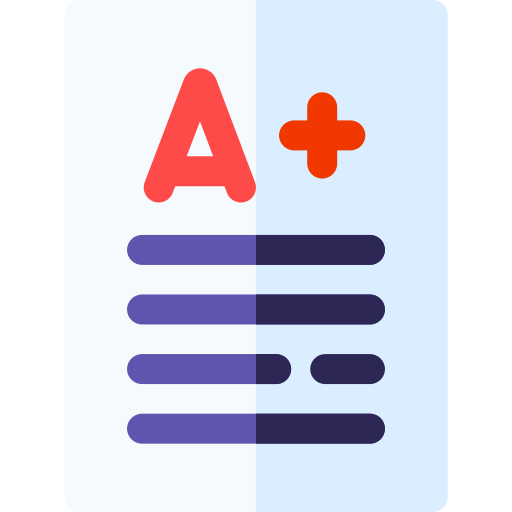دليل المعلم 2020 2021 تربية أخلاقية منهج إنجليزي صف عاشر فصل ثالث
Key Pillars of Learning
A design that evokes local culture, contemporary society and global citizenship
The cover draws inspiration from the Louvre Abu Dhabi Museum, which was opened in a historical ceremony by His Highness Sheikh Mohammed bin Rashid, Vice President and Prime Minister of the UAE and Ruler of Dubai, His Highness Sheikh Mohammed bin Zayed, Crown Prince of Abu Dhabi and Deputy Supreme Commander of the UAE Armed Forces, French president Emmanuel Macron and other leaders and heads of states in November of 2017
The Louvre Abu Dhabi is noted as a cultural beacon which aims to bring people of different cultures together to help visitors understand the universality of humanity. This reflects the aims of the Grades 10-12 course in showcasing and celebrating cultural diversity to help build understanding and foster positive behaviour
One of the aims of the Louvre Abu Dhabi is to induce respect, curiosity, learning and self-reflection. It is hoped that the Grades 10-12 books will also serve to reflect and build these important values.
The covers are based on the design by French Architect, Jean Nouvel. The roof of the dome incorporates 8000 overlapping metal stars. Each star can be thought of as an individual who is part of a complex society full of different cultures. Nouvel notes that the dome is a major symbol of Arab architecture and the roof of the Louvre Abu Dhabi a move to a modern interpretation of that tradition. The content of the books seeks to reflect that unity of tradition and modernity by encouraging students to recognise the strengths of the history of the UAE with its vibrant modern and outward looking approach, which will help develop the country in the future
Lesson Timing This Guide provides suggested lesson plans breaking down the lesson into different activities. Many of these activities are student-centred and active. Each activity is accompanied by a suggested timing for the activity. This timing is a suggestion only and it may be that you wish to devote more time to some tasks than others. This is left to your discretion and professional judgement, and your knowledge of your own students
Unit Themes The Guide focuses on key themes in each unit which it is suggested could be covered in the space of a one-hour lesson. These key themes in each lesson have been drawn from the range of unit content provided by the Curriculum Document and guided by the Learning Outcomes specified for each unit in that Document. You may wish to focus on other themes provided in the Student Book which you think are important for your students. This is perfectly acceptable and is again left to the professional judgement of the individual teacher
The Tasks and Activities in the Student Book
There are a number of tasks and activities provided in the Student Book which you can, if you wish, use as part of your teaching. However, some teachers may wish to use their own tasks and activities and not use those in the Student Book. This is perfectly acceptable
Alternatively, you may wish to use the tasks and activities suggested in this Guide You may find that some of the tasks and activities in the Student Book which are not mentioned in this Guide are more suitable or appropriate for your students; again, it is perfectly acceptable to use any of the tasks and activities provided in the Student Book in your teaching
Pedagogical Approach
The suggestions in the Teacher's Guide are based on sound pedagogical principles. Lessons are divided into different tasks and activities, many of which are not teacher-led but student-centred. The aim is to inspire and excite students by encouraging them to be involved, engaged and active. Typically, the lesson begins with a short five to ten-minute introductory task which serves to introduce students to the topics to be covered or remind them of prior learning. The lessons are then broken down into tasks and activities which take differing amounts of time; some will be ten minutes, some fifteen to twenty minutes and others longer. As noted, many of the tasks and activities are based around pair-work and small groups. It is recommended that when pairing students or putting them into groups, that different abilities of students in your class are taken into consideration. A task requiring a group of four, for example, might include students with a range of abilities. The teacher can take charge of how groups or pairs are put together and can be based on your personal knowledge of your students and their needs. It is
advisable to ensure that pairs and groups are changed regularly to ensure a mix of ideas, abilities and to retain the interest and motivation of all students in the class
Differentiation
There are a range of activities provided in the Teacher's Guides. Many of these activities provide the opportunity for differentiation. It is not the case that differentiation must be simply providing more able students with more challenging tasks than weaker students, although this may be something you might wish to provide in some circumstances
Pair work, for example, might be a way tasks can be differentiated, especially if the pair includes a weaker student and a stronger student. The stronger student can not only support the weaker student but also strengthens their own understanding and range of skills by having to think differently. Similarly, group work can be an excellent source of differentiation because it takes pressure off some students and allows them to be more comfortable with their peers and work more at their own pace
Other suggested activities which promote differentiation include questioning activities, 'hot seat' tasks, serial questioning, task choices, choosing different outcomes, for example cartoons, artwork, drama, poems and so on, which may be more appropriate for students with different learning styles or abilities. For example, Hot Seat activities are excellent as a differentiator as the questions asked are put in the hands of students and the student in the hot seat feels under less pressure to respond to questions by their peers rather than from the teacher. Serial and stepped questioning is designed to build the level and complexity of questions so that weaker students can take part, answer questions at a simple level, achieve, and feel they are making progress, whereas stronger students can tackle questions which provide stretch and challenge. In some cases, it is suggested that a range of tasks be placed around the classroom and students choose which they want to tackle. Weaker students may choose simpler tasks but ones in which they will be able to complete and achieve without the pressure to keep up with their peers or attempt to do the same things as their peers and failing. Differentiation by outcome may include the requirement to work on a task which is common to all students but to be willing to accept different outcomes as evidence of learning and progression. For example, there are a number of tasks included in the Teacher's Guide which suggest allowing students to produce poems, draw cartoons or other forms of artwork, develop role plays or a simple piece of drama as well as written outcomes. Such tasks are excellent sources of differentiation as they permit students of all abilities and skills to take part, to produce outcomes, and achieve




